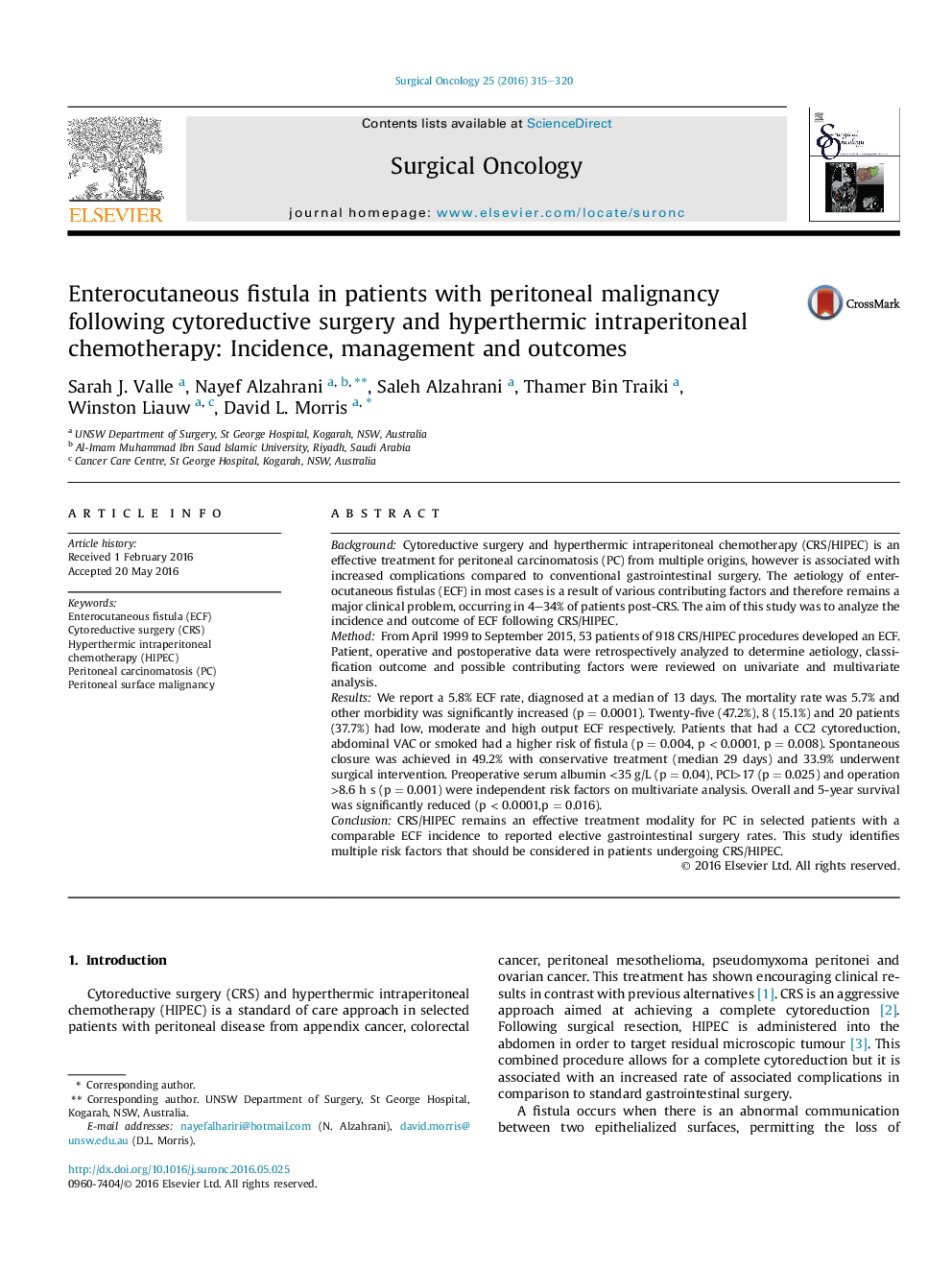| Article ID | Journal | Published Year | Pages | File Type |
|---|---|---|---|---|
| 6193864 | Surgical Oncology | 2016 | 6 Pages |
BackgroundCytoreductive surgery and hyperthermic intraperitoneal chemotherapy (CRS/HIPEC) is an effective treatment for peritoneal carcinomatosis (PC) from multiple origins, however is associated with increased complications compared to conventional gastrointestinal surgery. The aetiology of enterocutaneous fistulas (ECF) in most cases is a result of various contributing factors and therefore remains a major clinical problem, occurring in 4-34% of patients post-CRS. The aim of this study was to analyze the incidence and outcome of ECF following CRS/HIPEC.MethodFrom April 1999 to September 2015, 53 patients of 918 CRS/HIPEC procedures developed an ECF. Patient, operative and postoperative data were retrospectively analyzed to determine aetiology, classification outcome and possible contributing factors were reviewed on univariate and multivariate analysis.ResultsWe report a 5.8% ECF rate, diagnosed at a median of 13 days. The mortality rate was 5.7% and other morbidity was significantly increased (p = 0.0001). Twenty-five (47.2%), 8 (15.1%) and 20 patients (37.7%) had low, moderate and high output ECF respectively. Patients that had a CC2 cytoreduction, abdominal VAC or smoked had a higher risk of fistula (p = 0.004, p < 0.0001, p = 0.008). Spontaneous closure was achieved in 49.2% with conservative treatment (median 29 days) and 33.9% underwent surgical intervention. Preoperative serum albumin <35 g/L (p = 0.04), PCI>17 (p = 0.025) and operation >8.6 h s (p = 0.001) were independent risk factors on multivariate analysis. Overall and 5-year survival was significantly reduced (p < 0.0001,p = 0.016).ConclusionCRS/HIPEC remains an effective treatment modality for PC in selected patients with a comparable ECF incidence to reported elective gastrointestinal surgery rates. This study identifies multiple risk factors that should be considered in patients undergoing CRS/HIPEC.
